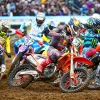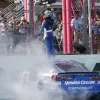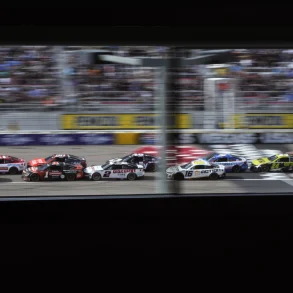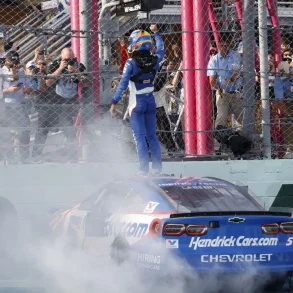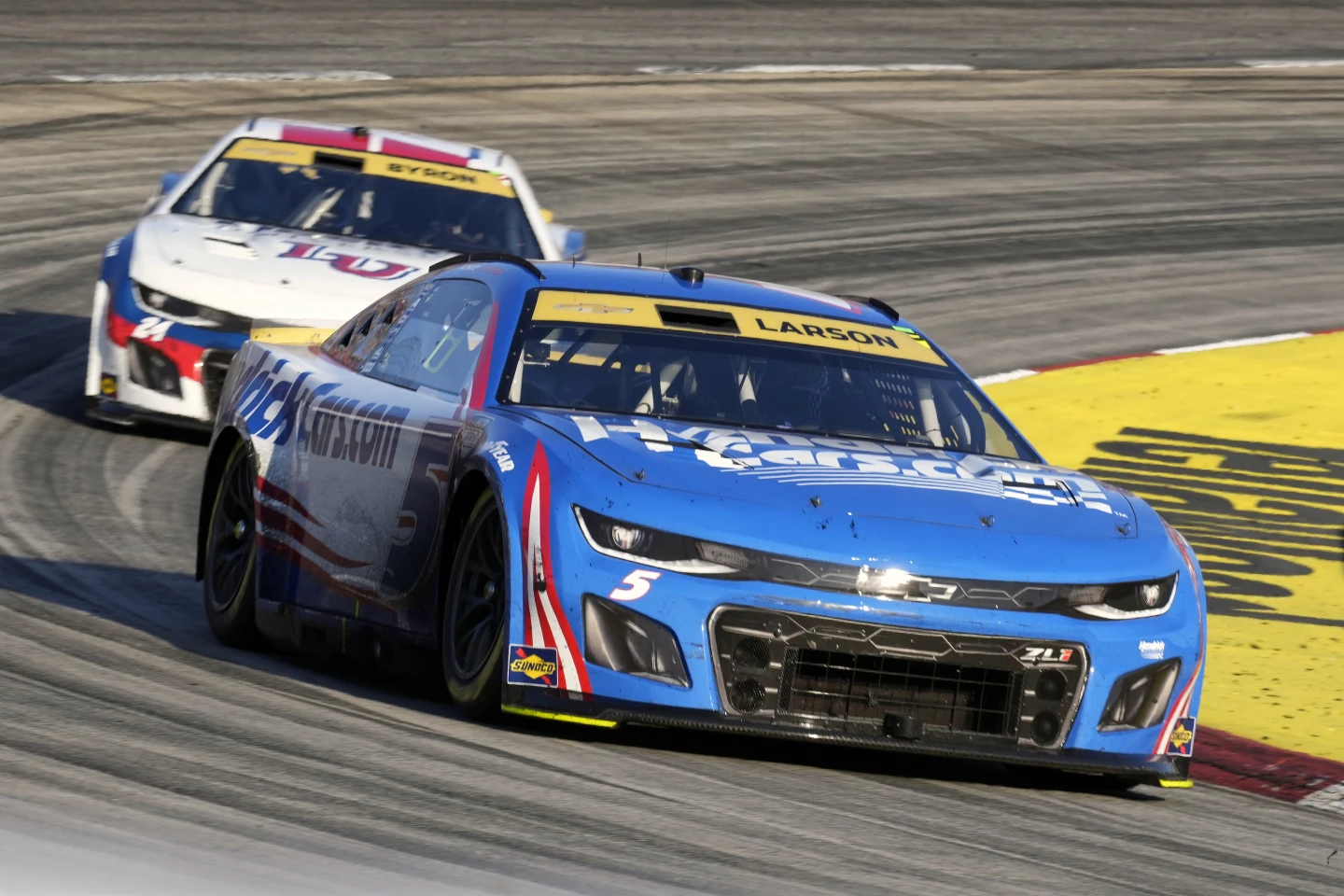Erik Jones experienced intense pain when his Toyota crashed into the outside wall during a late wreck at Talladega Superspeedway last weekend. Despite being a resilient NASCAR driver who had never missed a Cup race in over seven seasons, Jones radioed his team for help, expressing uncertainty about his condition.
After the crash, Jones managed to exit the car on his own due to adrenaline. He was promptly taken to the track’s care center, where he underwent a quick examination and was cleared. However, once back at his motorhome, he began experiencing excruciating back pain.
Jones had to return to the care center and was then taken to the hospital, where he received the diagnosis: a compression fracture in a lower vertebra. This injury will prevent him from competing in Sunday’s race at Dover Motor Speedway.
Reflecting on the experience, Jones expressed surprise at having broken a bone for the first time in his life and described the pain as unfamiliar.
Jones is starting to feel better, but he still has some discomfort. His movement is limited, and he feels pain when he sneezes, even though he’s won three Cup races.
Beyond just updating on his health, Jones and Legacy co-owner Jimmie Johnson wanted to emphasize something else.
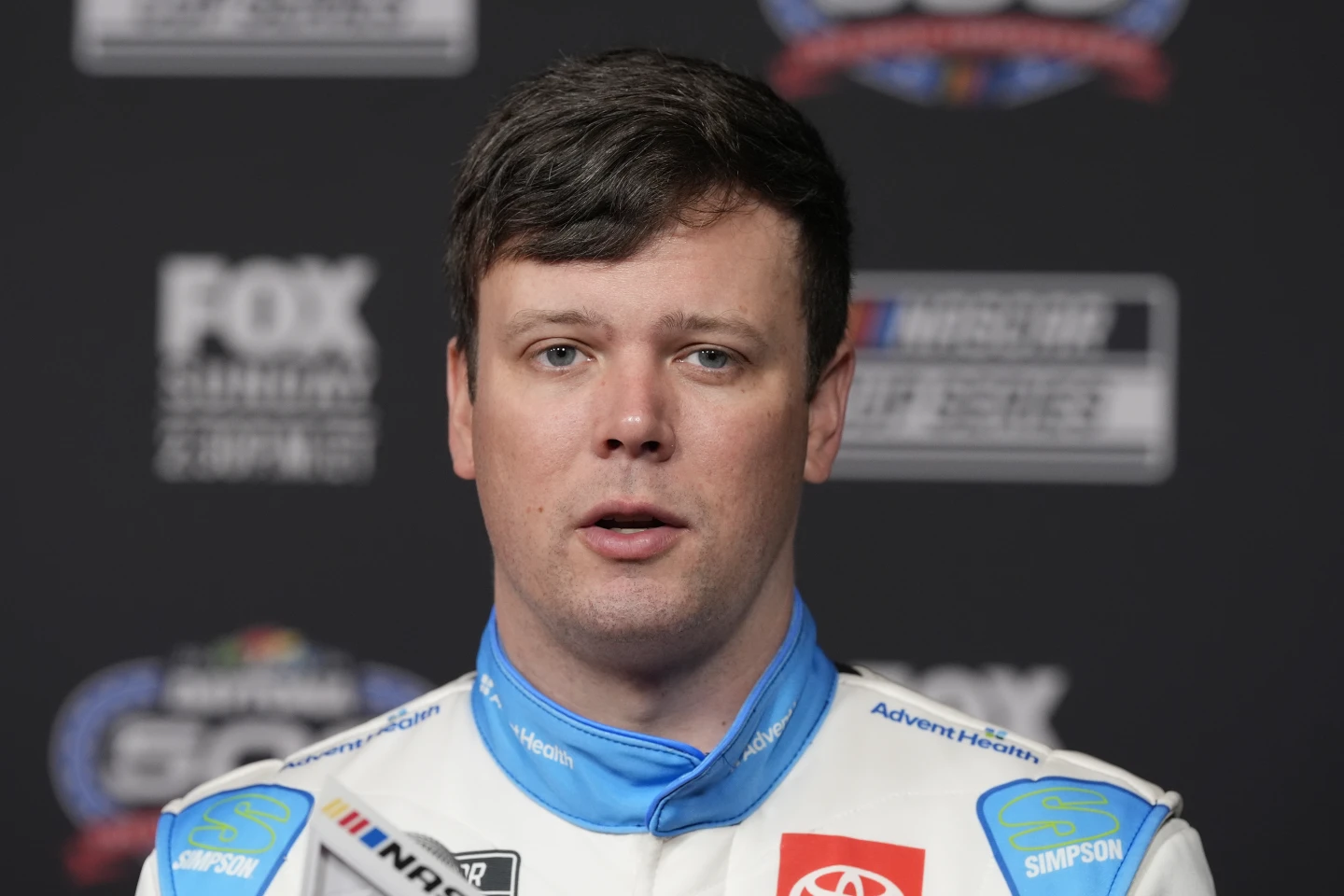
They believe the medical team at Talladega did everything right when they checked Jones after the crash, even though they didn’t realize how serious his injury was until later that night.
Johnson praised the care center’s response, saying there wasn’t much more they could have done at that moment. He thinks everyone handled the situation well.
Visiting the care center and doing post-exam interviews are typical parts of a NASCAR weekend, just like seeing the checkered flag wave.
According to NASCAR’s rules, if a car is damaged in an accident and needs to go to the pit wall or garage area, the driver must go to the Infield Care Center right away, whether by ambulance or another vehicle.
Usually, these visits are straightforward, and drivers are ready to race again the following week. But Jones’s situation was a bit different.
After going to the care center twice, Jones had to get further evaluation and testing at UAB University Hospital in Birmingham, Alabama, several hours later. Then, he went back home to North Carolina and saw specialists in Charlotte, where they found out he had a compression fracture in a lower vertebra.
This raised some questions about the process, including why the back injury wasn’t noticed during the first visit to the care center. Jones took some responsibility for that.
“They checked me thoroughly like they usually do,” Jones said. “I told them I felt okay. I kept saying it felt like a muscle strain.”
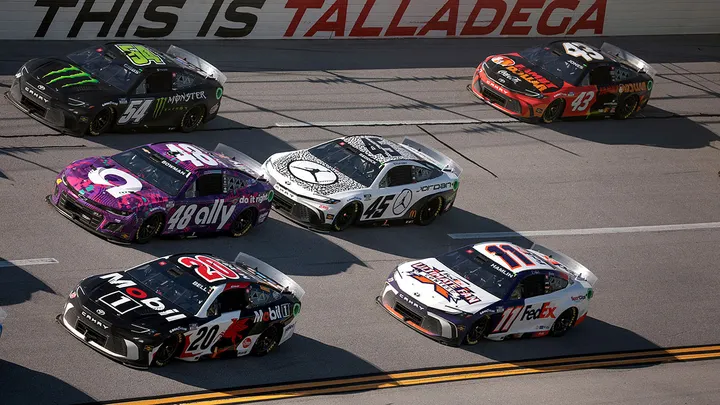
During Jones’s first visit to the care center, he didn’t have X-rays. The nurses there told him to come back if he felt worse. When his pain got worse, he went back, and that’s when they did the X-rays.
The care centers at NASCAR tracks are mostly run by local doctors, nurses, and specialists who are connected to nearby hospitals.
“NASCAR has very strict rules about who can treat people under NASCAR,” said Ryan Stanton, the medical director of the AMR NASCAR safety team. “Some care centers have X-rays, and most have ultrasound machines.”
Sometimes, they’re worried about concussions or other head injuries, but usually, the first check-up is like a regular physical exam. The drivers take off the top half of their racing suits, check their vital signs, and do a full body exam. If they see any signs of injury, they take special care.
“For drivers, if everything’s fine, they want to leave as soon as possible,” Stanton said. “Even though they need the help, they’d rather not be there. They’re athletes, and they’d rather be racing than seeing doctors.”
If necessary, the drivers will do tests to check their brain health. “We can usually finish the whole check-up in about 5 minutes, maybe even less,” Stanton said.

And what if a driver is trying to hide any symptoms that could stop them from racing? “A lot of these tests we do, you can’t fake your way through,” Stanton said.
Jones took a hard hit, but the cars and barriers helped lessen the impact. NASCAR took the Toyota to study it more at their research and development center.
“I think NASCAR and the Next Gen car got some unfair criticism this week,” Jones said. “I think the car did what it was supposed to do.”
Corey Heim will drive the No. 43 Toyota instead of Jones, and there’s no set time for Jones to come back. Legacy also has John Hunter Nemechek racing full-time. Johnson, a seven-time NASCAR champion, only races sometimes, like at Dover on Sunday, where he has 11 wins.
Heim will drive for Jones again next weekend in Kansas if needed. Johnson hasn’t ruled out stepping in for Jones either. “I’m feeling better every day,” Jones said. “I have a check-up next week, and I’ll decide what to do after that.”
